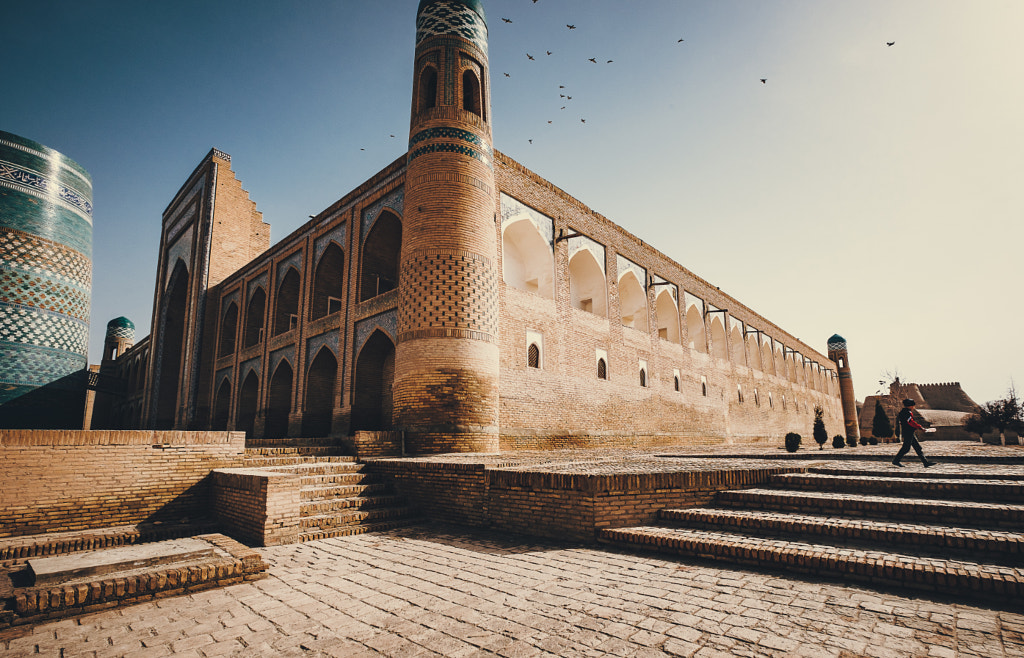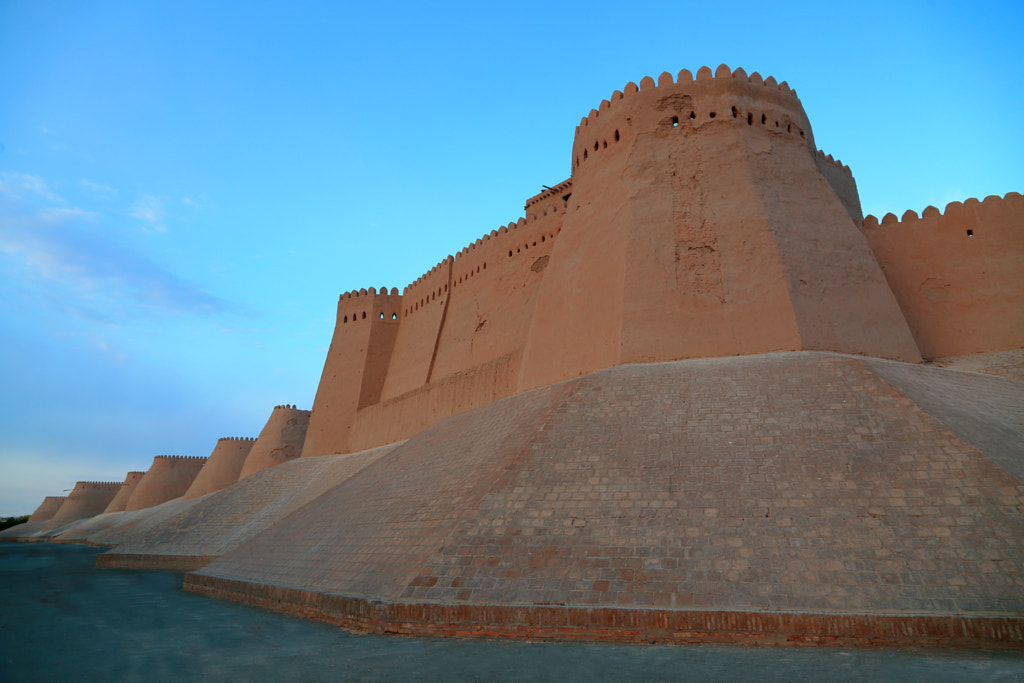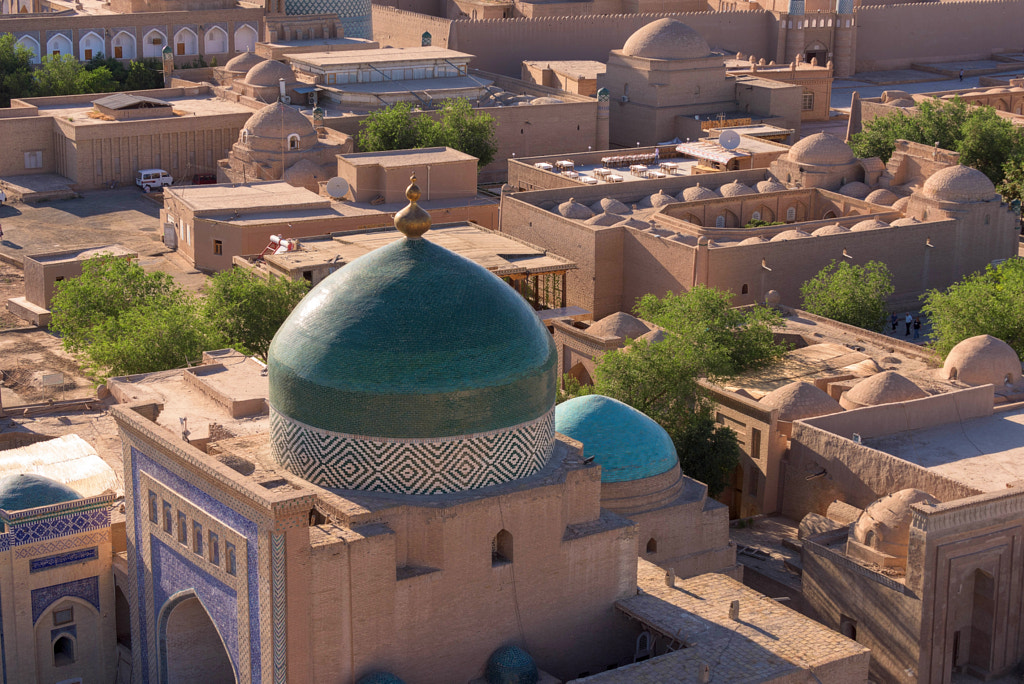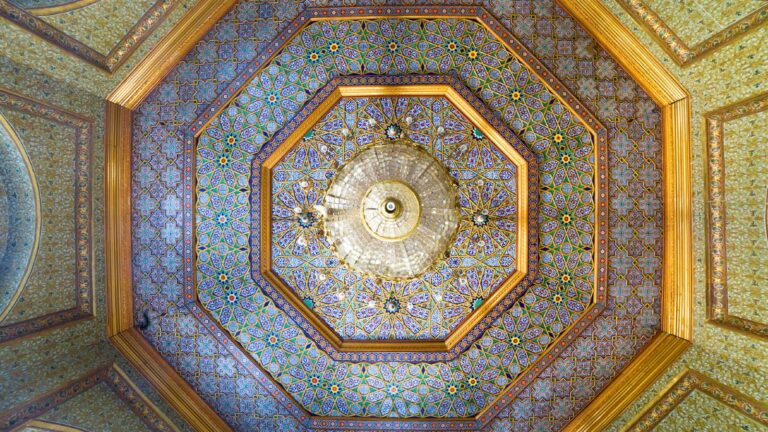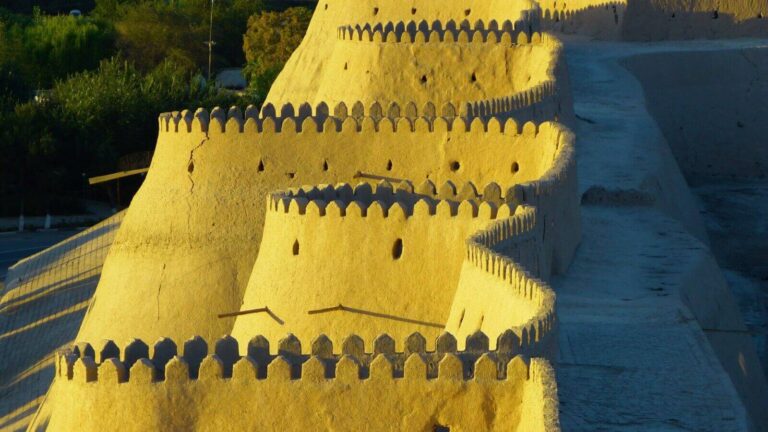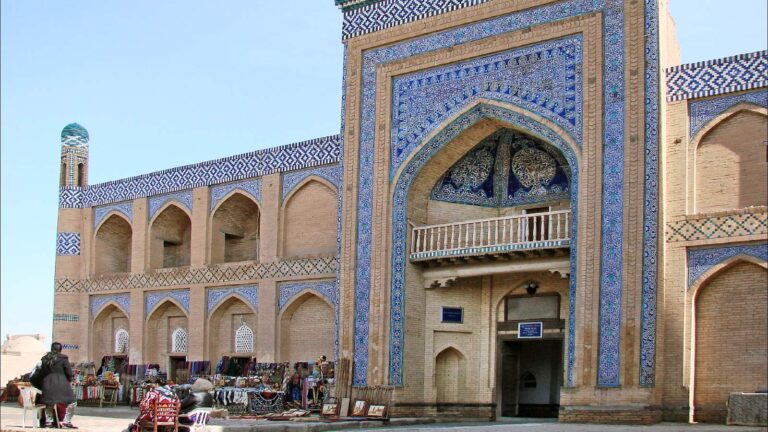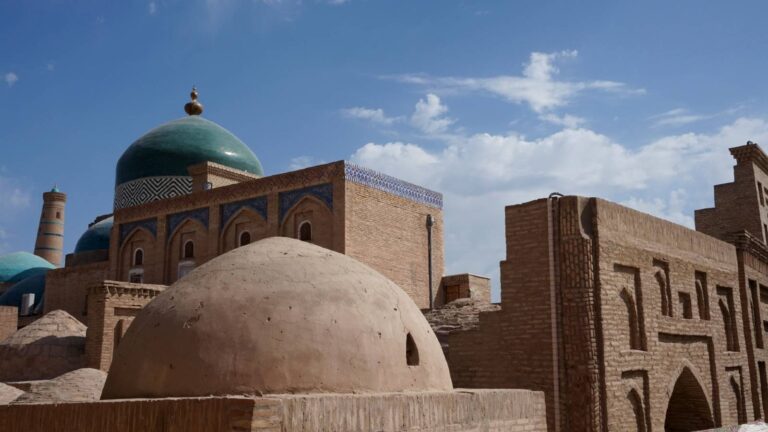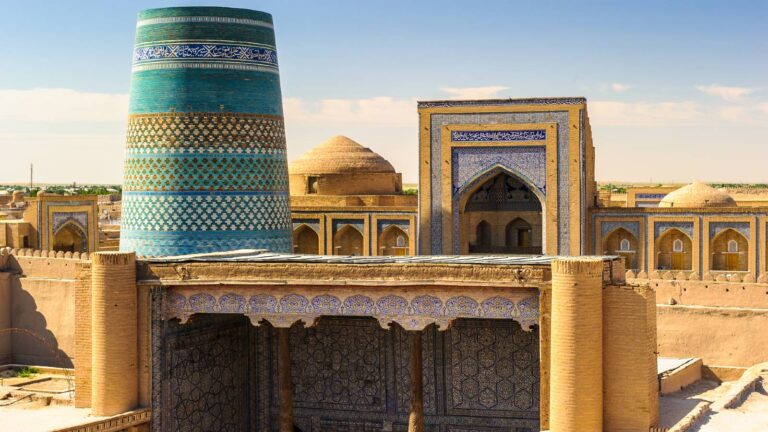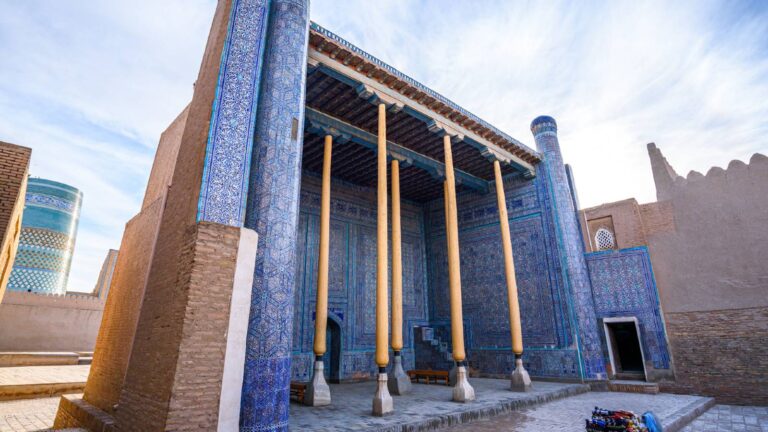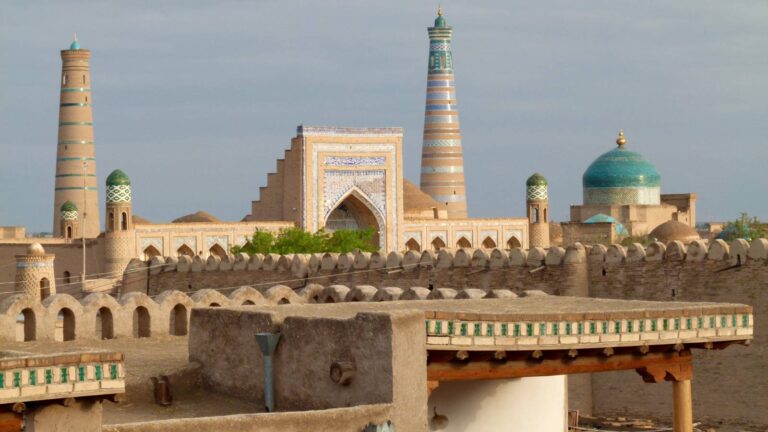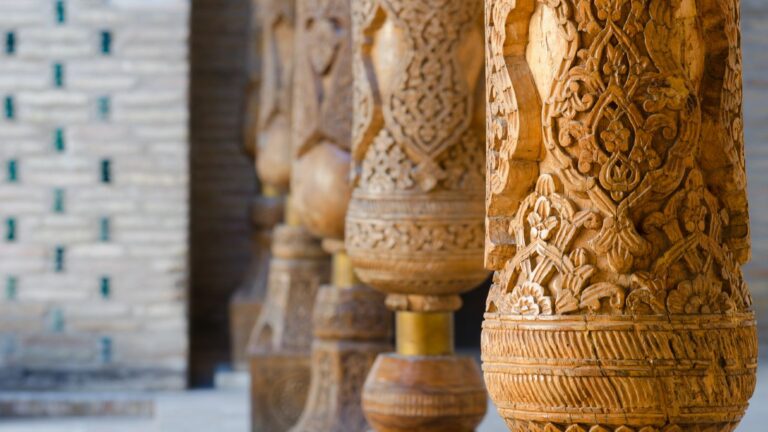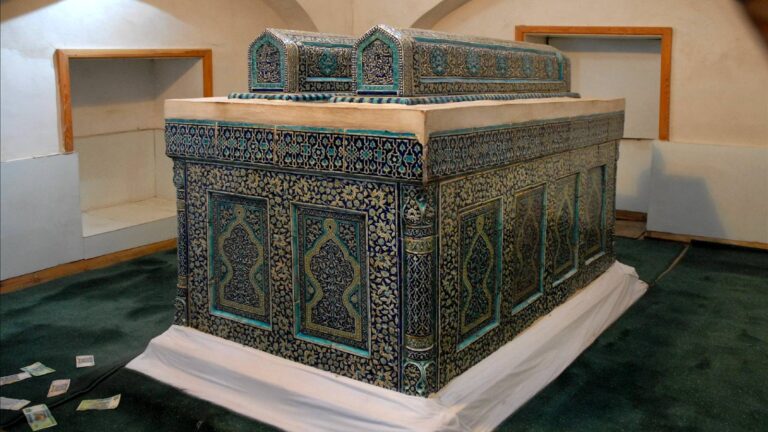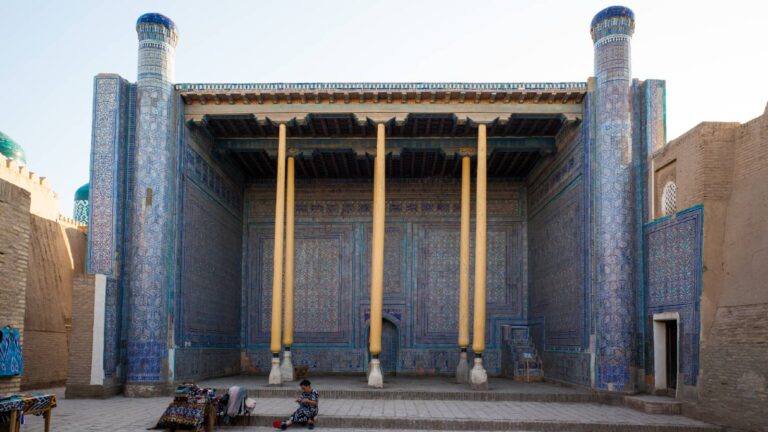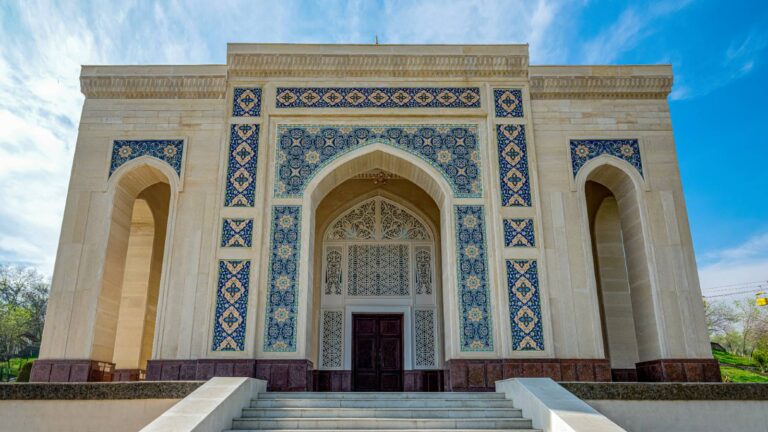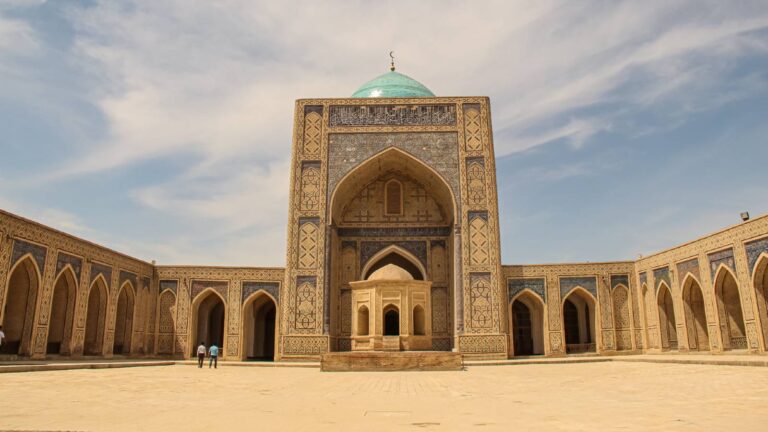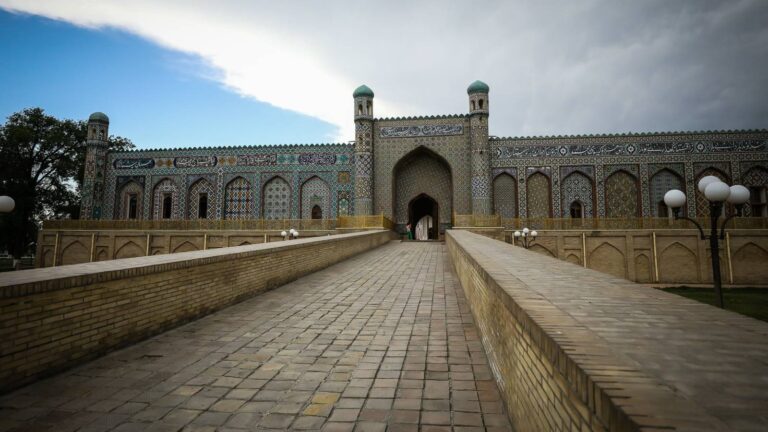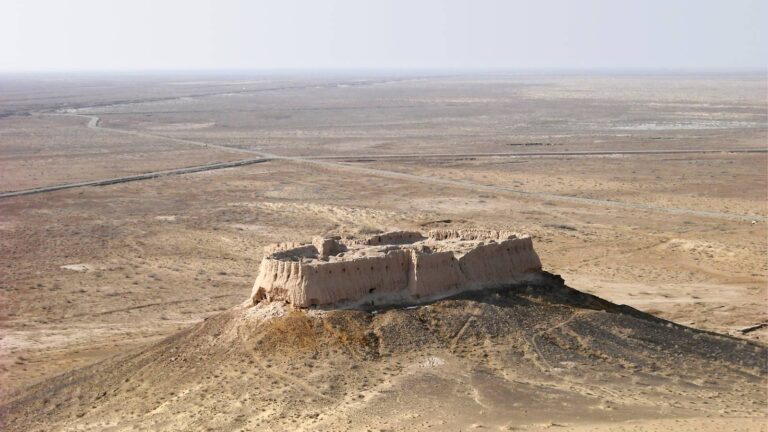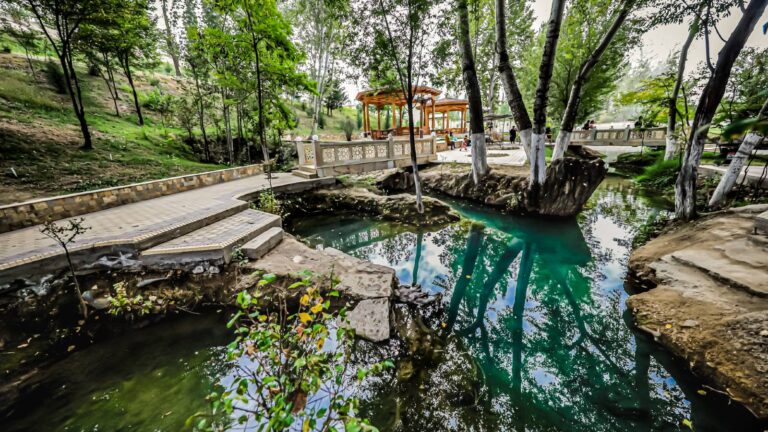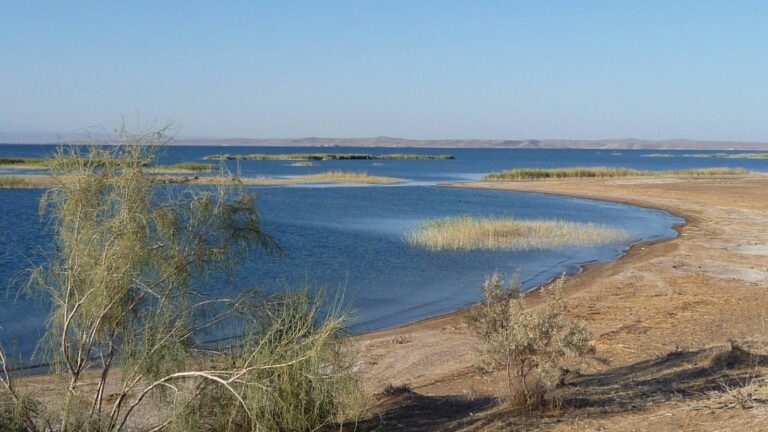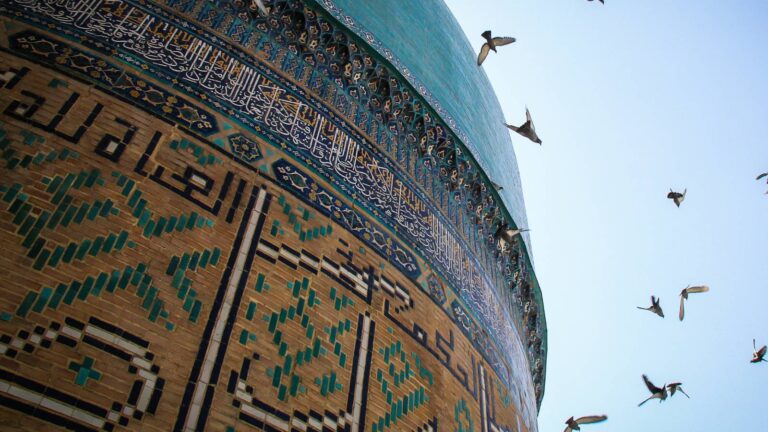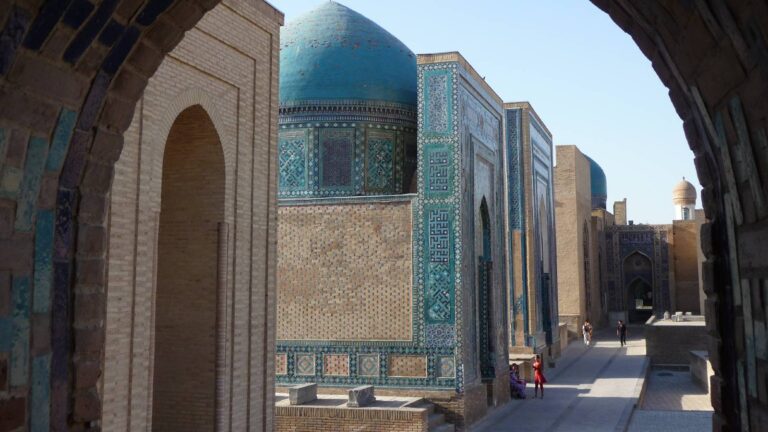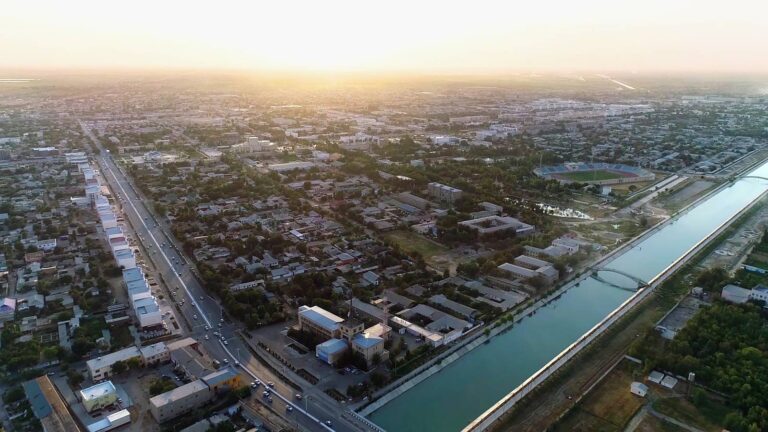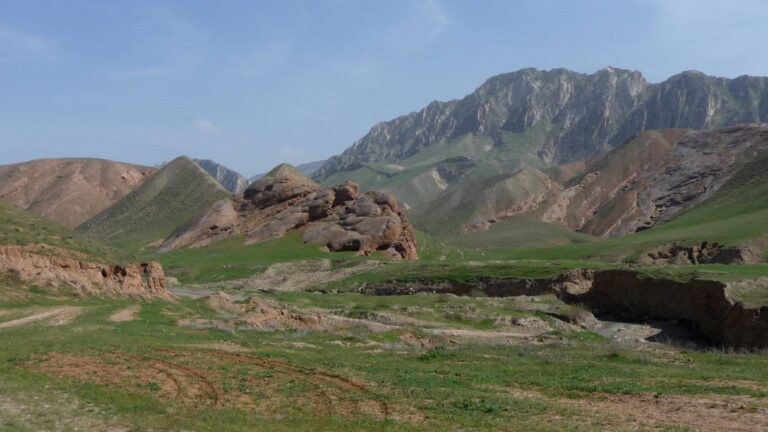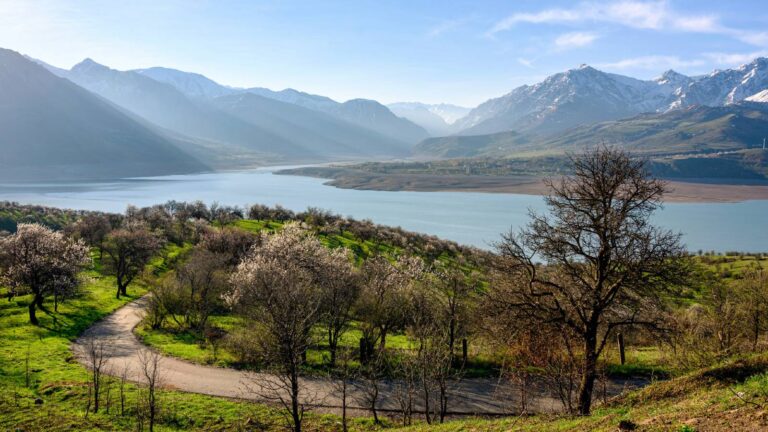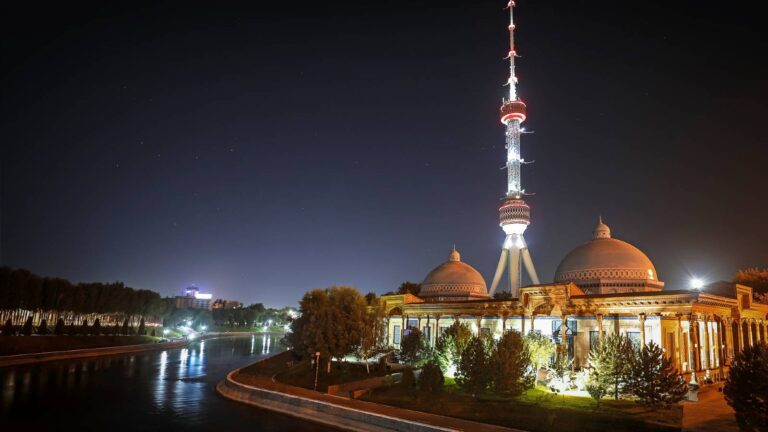By Plane
- Internal flights: Tashkent-Urganch (everyday), Fergana-Urganch (twice a week), Samarkand-Urganch (twice a week)
- International flights: Aktau-Urganch, Isyanbul-Urganch, Moscow-Urganch, Saint-Petersburg-Urgench
By Train
Trains are accessible to get from all region of Uzbekistan
By Bus
There are regular bus lines from all region of Uzbekistan.
Khiva is ancient Khorezm and it is still wellpreserved and living city. Most of the historical buildings are in excellent condition of its architecture, Khiva gives an excellent idea of what other cities of Central Asia may have been like before.
Khorezm is a cradle of three civilizations formed in Uzbekistan. Khiva is usually called city-museum under the open sky with its beautiful minarets and madrassahs. It is one of the remote cities of Uzbekistan.
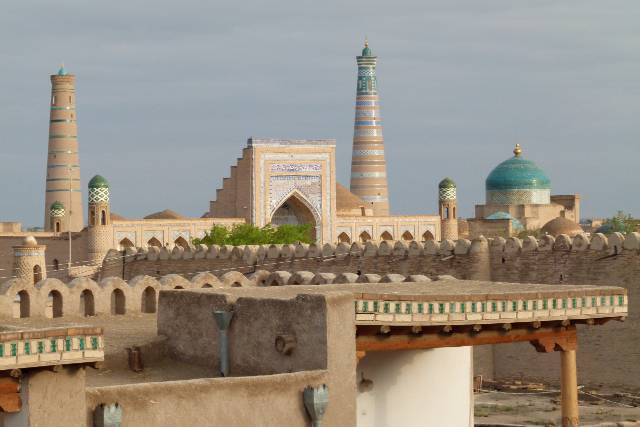
Muhammad Rahim Khan Medressa 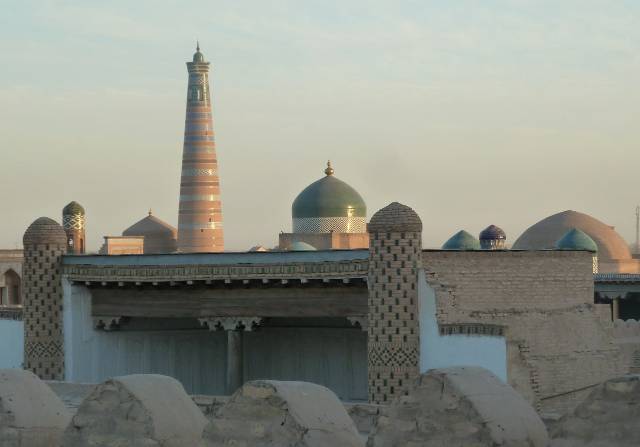
Juma Mosque Minaret 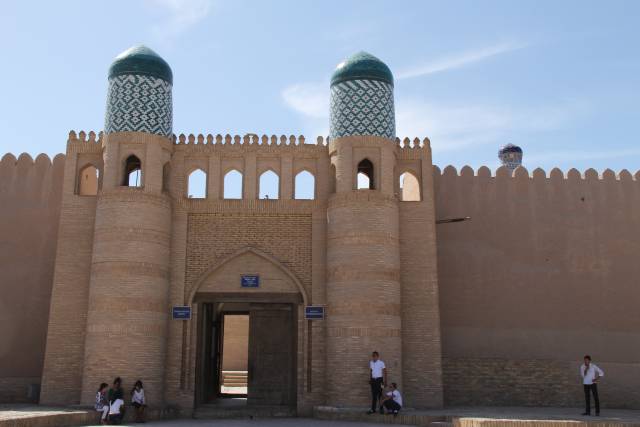
Khiva is split into two parts. The outer town, called Dichan Kala, was formerly protected by a wall with 10 gates. The inner town, or Itchan-Qala, is encircled by brick walls, whose foundations are believed to have been laid in the 10th century.
Present-day crenellated walls date back to the late 17th century and attain the height of 10 meters. Itchan-Qala was the first site in Uzbekistan to be inscribed in the World Heritage List (1991). National cuisine of Khorezm includes dishes like tuhkum barak, shivit oshi, fried fish, ijjan
“Ancient Khorezm is the Egypt of Central Asia ”-The archeologists searching the ancient traces of human civilization achieved great successes through exploring the ancient land of Khorzem. They testified again that the culture, art and history of Khorezm are entwined with the development of Central Asia.” S.P.Tolstov.
The name Khorezm appears in the Avesto, a Zaroastrian religious text, which illustrates the course of events in Eastern Iran and Central Asia, during which time the society comprised of different classes of economic disparity. Avesto informs the functions of clergies, army, farmers, craftsmen, and slaves altogether which formed the first statehood. The events in Avesto occurred in a land “Arianam Vayja” as the translation confirmed by scientists as Great Khorezm. This empire included Praurata (Parfiya), Mouru (Marv), Gava (Sagdiana), and Khveyrezm (Khorezm).
So the first statehood developed in Central Asia in the first millennium B.C. Bactria in the IX- VIII century B.C and in the lower reaches, south of the Aral sea (Northwest of Uzbekistan, North west of Turkmanistan).
Khorezm developed in the VI-VI century B.C. as kingdoms. Bactria and Khorezm shared frontiers in the middle Amudarya river delta. The first artificial irrigation construction in Khorezm dates back to the VI-V century B.C. Population was mainly occupied with agriculture in the villages, and craftsmanship and trade in urban areas. Khorezm was one of most important lands in Central Asia with its commercial, political, and cultural development from the VI century B.C until the XIX century A.D.
Thanks to Khorezm’s strategic location on the Great Silk road from Iran to India, it actively participated in fostering relations among various cultures and kingdoms. Therefore traders, craftsmen, scientists and architects visited here as an important destination. So the Great Silk Road was not merely a caravan trade route but it also played an instrumental role in the development of civilization of Central Asia.
Celebrations and Festivals
In Khorezm is provided international festival like Magic of dance, Melon festival, Navruz, Strongmen tournament.
Located in the northwest of the country in the lower reaches of the Amu-Darya River. It borders with Turkmenistan, Karakalpakstan, and Bukhara Region. It covers an area of 6,464 square kilometers (2,496 sq mi). The population is estimated to be around 1,776,700, with some 80% living in rural areas.
The climate is a typically arid continental climate, with cold winters and extremely hot, dry summers.
The economy of Khorezm Region is primarily based on cotton. Cotton is by far the main crop, although rice production has increased significantly in the last several years. (though the Uzbek government discourages rice production near to deserts, over water usage concerns) There are also many orchards and vineyards, melon and gourd plantations and potato fields.
Khorezm Region is famous for its “gurvak” melon in Uzbekistan. Industry is also heavily oriented to cotton, with cotton refining, cottonseed oil extraction and textiles predominating. Khorezm is a place where many famous scholars were born, such as Abu Rayhan Biruni and al-Khwārizmī.
The region has a well-developed transportation infrastructure, with over 130 km of railways and 2000 km of surfaced roads. The region is connected by rail to European Russia and the Caucasus.

